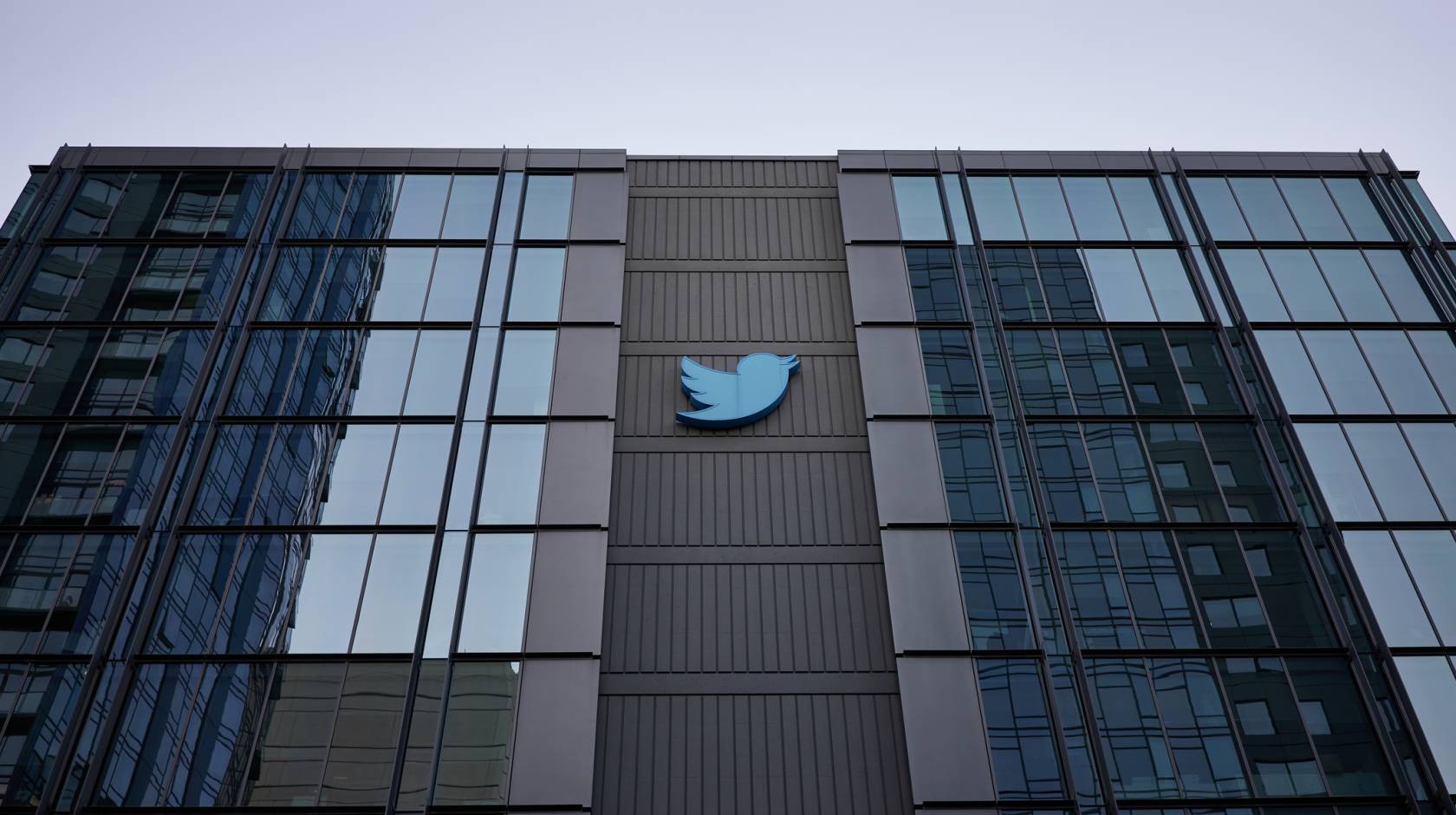Karen Michele Nikos-Rose, UC Davis

In light of Twitter’s new ownership, University of California, Davis, experts weigh in on what the recent changes could mean for social media, news distribution and communications in general.
Cuihua (Cindy) Shen is a professor of communication at UC Davis. Her research and teaching interests revolve around the structure and impact of social networks in various online platforms. She has published research on misinformation and polarization on social media.
Her work has been funded by the National Science Foundation, Facebook and others.

Shen
Magdalena Wojcieszak is a professor of communication at UC Davis and an associate researcher at the University of Amsterdam. She is interested in political communication, public opinion and information exposure in the current media environment. She has published work on partisan news, polarization and (limited) news exposure online. Her recent study looks at echo chambers on Twitter.
Q: How has the new ownership of Twitter affected, or not affected, social media?
CS: The new ownership has made significant changes to Twitter as a platform. First of all, Twitter is fundamentally an advertising business, much more so than a tech business. Its main revenue comes from ad sales. Elon Musk claims that he wants to liberate Twitter, get rid of censorship, etc., but the robust content moderation Twitter once had is very crucial for its ad business. Advertisers do not care about free speech as much as they care about where their ads are placed and who would see them. If the site is full of racist comments and hate speech, advertisers will notice and they will leave, and that is exactly what happened.
Q: Following up, have changes in Twitter, or will changes in Twitter, affect public discourse?
MW: When thinking about how the changes in Twitter will influence public discourse, we really need to keep in mind that only about 23 percent of Americans use Twitter. Consider that YouTube is used by 81 percent, Facebook by 69 percent and Instagram by 40 percent of Americans. Moreover, a solid majority of those users are very infrequent visitors of the platform. A recent study by Pew Research Center found that the top 25 percent of users produce 97 percent of all tweets on the platform, while the bottom 75 percent of users produce just 3 percent of tweets, and the majority did not tweet at all in a span of a month! Moreover, the solid majority of the tweets, even by the most active users, are kind of speaking to the void as they are not generating any reactions in the forms of likes, retweets or quote tweets. This should put in a much-needed perspective the concerns about the impact that changes in Twitter may have on the users.
That said, the most educated, academic, political and journalistic elites do use Twitter, and that’s one of the many reasons why, I believe, the takeover has generated so much attention amongst the academics and the news media (of course in addition to the key issues related to free speech, hate speech, platform regulation, platform responsibilities, etc.). We are actively debating the takeover because we are likely among the top users, logging into the platform daily and seeing posts by prolific academics, journalists and news media. However, again, we are a small portion of the overall population of American adults (let alone of the global population, in that the use of Twitter is even lower elsewhere in the world; consider that it’s about 7 percent in Germany, 8 percent in Mexico and only about 10 percent in Iran).
Q: Twitter started charging $8 per month for a special subscription that would give subscribers “blue check status.” Was this model effective?
CS: The $8-per-month subscription model is a very bad idea. According to Elon Musk’s initial “Twitter Blue” proposal, anyone who pays $8 would get the same blue check mark as the verified accounts. [A New York Times story, which quotes a UC Davis graduate student, can be read here.] The blue check mark used to be a credibility signal, and a very effective one. The signal works precisely because it could not be bought — celebrities and organizations previously had to go through a rigorous verification process to obtain the check mark. The $8 subscription model essentially rendered the signal useless. As you probably know, some people paid $8 and pretended to be pharmaceutical company Eli Lilly or game maker Nintendo and cost these companies millions of dollars in lost market cap. This debacle again drove away a lot of advertisers. [The program was later suspended. A revised “Twitter Blue” program that addresses the impersonation problem is reportedly being developed at this writing.]
Q: Are there other alternative platforms that make sense, should people decide to leave Twitter?
CS: Functionally, yes, but realistically, no. There are some sites with similar functions to Twitter. Some are existing big social media platforms such as Facebook, LinkedIn and Instagram. They already have large user bases, friendly user interfaces and robust content moderation systems, but they are traditionally not used or seen as Twitter alternatives. Each is filling a different “niche” and serving a different purpose, to different people. For example, LinkedIn might be great for career-related content, yet it is not known for memes or cute animal videos.
Therefore, I argue that it is difficult for users to turn to these big players as viable Twitter replacements because users already use these platforms for some other purposes and have built audiences, networks and communities on these platforms accordingly. For example, one’s Instagram or LinkedIn network is different from one’s Twitter network, for good reason. It is unrealistic to expect users to transfer their entire Twitter network to some other existing platform. It is also unrealistic to expect users to co-opt an existing platform that has been used for a different purpose into a Twitter-like town square.
Q: What do you think about Mastodon and other platforms that some people are turning to?
CS: There are a few smaller, emerging players, including Mastodon and Post. Mastodon has been around since before the Twitter takeover, but with a much smaller user base. A lot of academics and pundits I follow have moved to Mastodon, but I remain a skeptic. My reasons are: 1) Mastodon’s user interface is not friendly at all, compared to Twitter; and 2) even though a lot of users have migrated to Mastodon, its user base is still much, much smaller than that of Twitter.
Post is a brand-new platform developed to be a Twitter replacement. The interface and functions are very similar to Twitter, but the users are not there yet, so the utility of the platform is uncertain. Again, functionally, there seem to be many Twitter alternatives. But in practice, none of them can replace Twitter, at least not yet.
Ultimately, the utility of a social media platform such as Twitter is determined by one’s social network on it (i.e., people I follow, people who follow me, and the incidental crowd I’d like to influence and be influenced by). As long as my network is still using Twitter, I am still using Twitter. This is why Twitter is so difficult to replace. Twitter does not have sophisticated functions or a fancy interface. It is still around, despite all the disruptions brought by Musk, because most people [who were using it] are still using it. And as long as the critical mass is still using Twitter, I will stick to Twitter, because its utility far exceeds the utility I get from alternative platforms.
Q: What about using Twitter as a news source? Can that still happen?
CS: A case in point: In the past week there have been widespread protests across China against the draconian zero-Covid policy. I have been following protest news on Twitter, and Twitter only. Twitter is hands down the best central clearinghouse for breaking news and citizen journalism around the world. There are no alternatives.
Judging from the stats shared by Musk, I am not the only one holding this opinion. Twitter new accounts and daily active users have increased under Musk, despite all the disruptions and debacles. In the near term, I think Twitter will continue to be the go-to platform for sharing short-form news and other information.
MW: The population of Twitter users is democratically consequential — all politicians, most journalists, pundits and news media organizations are on Twitter and disseminate their content to the users. Thus, Twitter has been a source of news for many of its users for years, even though most still report going to the platform for entertainment. In fact, my recent work shows that most users do not follow political elites on Twitter and — in fact the following of politicians, journalists and news media pales with that of celebrities and entertainment figures.

Wojcieszak

